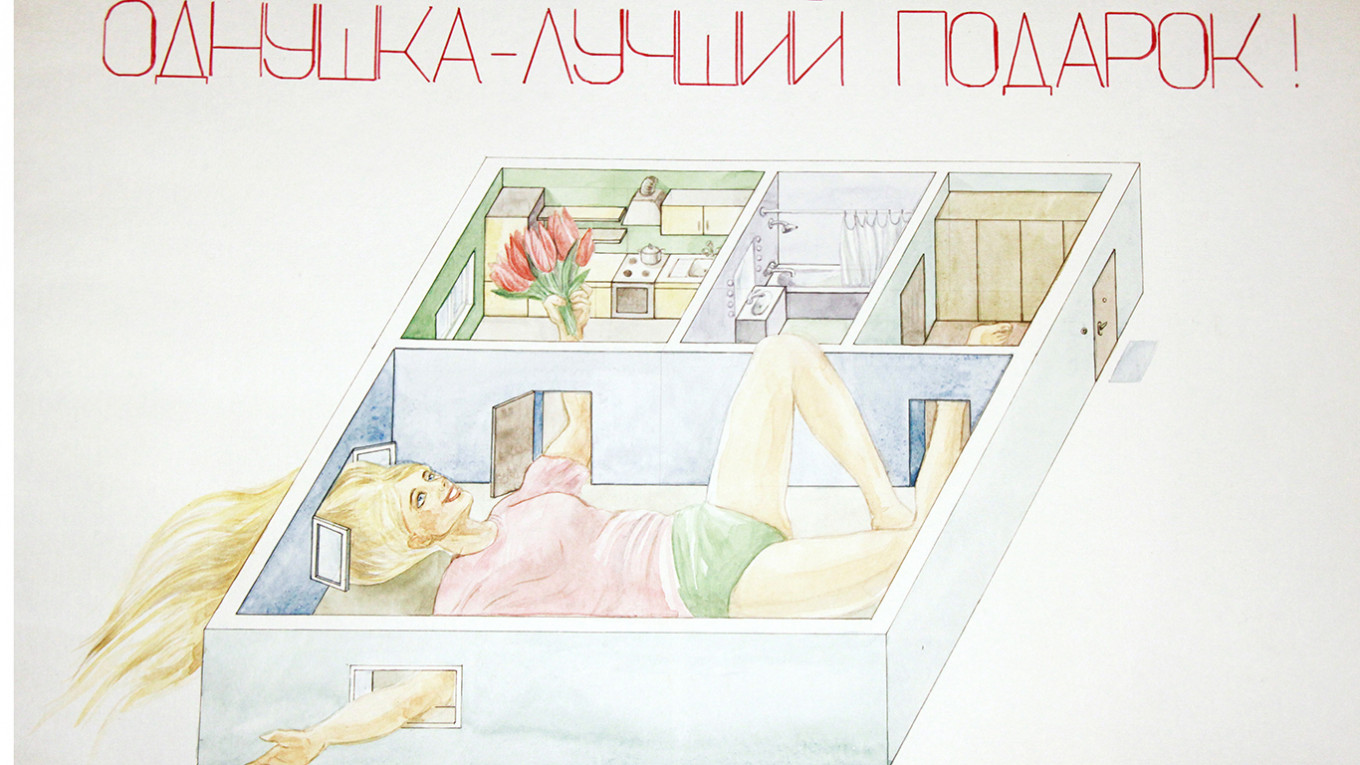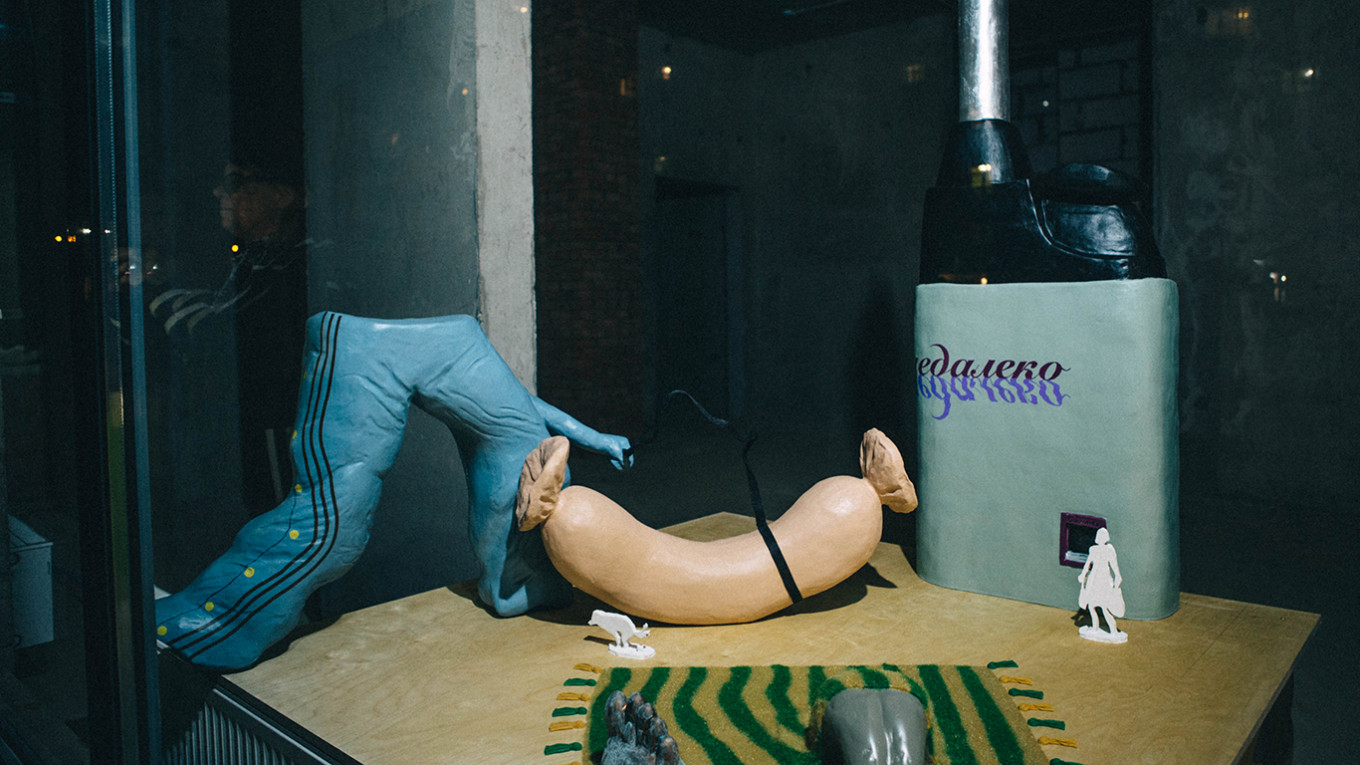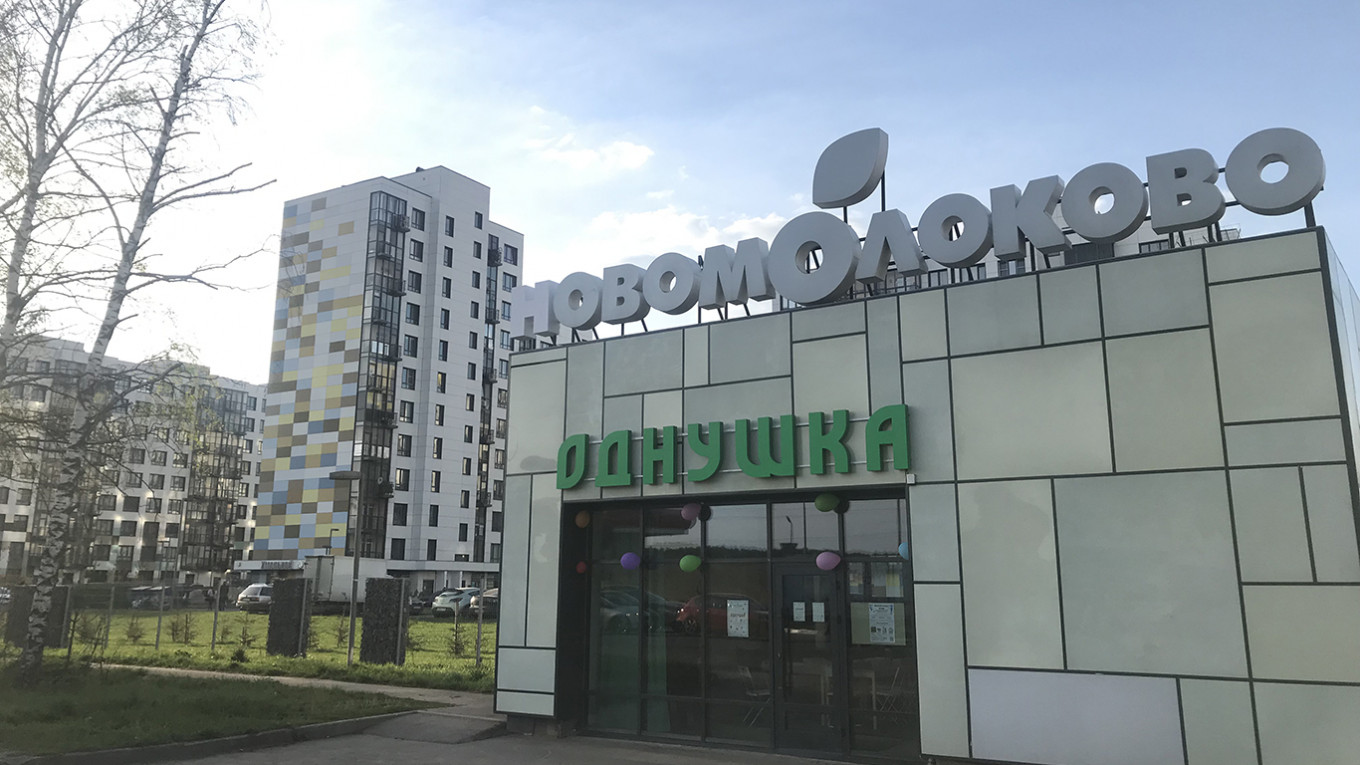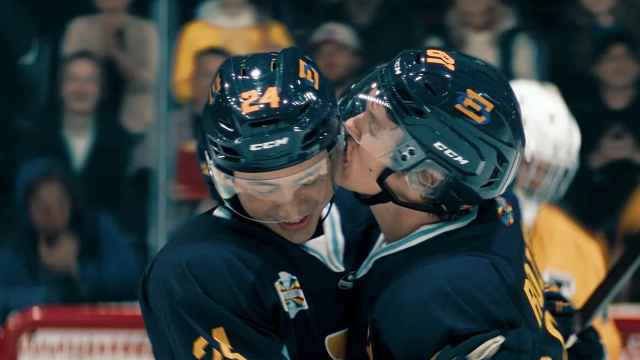What if I were to tell you that the most exciting contemporary art in Moscow today lies an hour-and-a-half drive through the traffic-choked motorways towards Domodedevo airport? It gets worse. Those who brave the tailbacks and hold-ups will find themselves arriving not at a gallery, museum or even studio complex, but rather at a real-estate development — hardly the most promising place for contemporary culture.
Novo-Molokovo is a suburban enclave of apartment blocks looming south-east of Moscow’s outer ring road. A trailer stands at the site entrance, and it is here, in an administrative office for property sales, among acres of high-rise flats, encircled by commuter traffic, that a group of creators and curators have launched a new experiment in “social sculpture."
This is just one of a satellite of new shows opening around Moscow’s outskirts, all part of a project called NA RAjONE (Beyond the Center).
The project is the brainchild of Simon Mraz, the director of the Austrian Cultural Forum Moscow. Mraz wants the art world to start paying attention to far-flung places on the city’s outskirts, describing outer districts as "the culturally most relevant and dynamic places of big cities today."
Moscow’s center may be where most of its museums are located, where its cultural heart conventionally beats, but it is on the residential periphery where life is lived, connections made, and culture formed - and so NA RAjONE is turning the spotlight to illuminate precisely these spaces.

So far the most ambitious of this wide program of events and exhibitions is Novo-Molokovo. Visit the housing estate now and you’ll find contemporary art embedded amongst its campus-like complex of showrooms and supermarkets. Sculptures stand in empty shop stalls, behind glass display windows that would look like museum exhibitions if it weren't for the "for rent" signs emblazoned across them. The former sales office now hosts a rolling program of artist residencies.
Curators Yelena Ishchenko and Yelena Kolesnikova were intrigued by the task of creating public art in a site built almost entirely for private residence, hence they named their exhibition Odnushka, using the Russian term for one of the most common types of accommodation in Moscow: the single-room studio flat.
In Kolesnikova’s words, she saw the project as an opportunity for "strengthening good neighborhood relations and creating and sharing experience in developing grassroots initiatives." They sought to turn the trailer, which was originally used for property transactions, into an open and interactive space where residents could become acquainted with contemporary art.
The curators issued an open call, from which they selected several young artists to create interactive "social sculptures" that would challenge how the locals engaged with their immediate environment. To this end, artist Alisa Oleva created a program of ‘walkshops’: walking tours which lead participants in curated trails around Novo-Molokovo in ways that defamiliarized the well-trodden surroundings. Participants were blindfolded and led by hand, sent on parkour sessions, or guided along nighttime trails by torchlight.
Alexander Gorelikov was interested in exploring ways to reconnect the brand-new housing estate with the historical memory of the region where it stands. He chose to investigate the legacy of the Soviet polar pilot Vasily Molokov, whom the residential complex is named after, and created an illustrated zine depicting the explorer’s life in a series of surreal comic-strips which merged suburban scenery with sinking ships and arctic adventure.
Sound-artist Dmitri Stepanov created a guided meditation piece. Downloadable via a QR scan and tailored specifically for residents, the meditation led them on a psychic exploration of their local geography. Varvara Gevorgizova, meanwhile, interpreted the term "artist residency" in the most literal manner, opting to move into and live out of the former sales office for almost a month. In the glass-walled office, her private life became public, and she used the exposure to create a discussion group about body politics, curating a program for residents included reading groups, film screenings and discussions.
Along with these events, a pop-up sculpture park was curated in vacant shopping lots. Young artists from Russia and Austria were invited to create maquettes (small models) of sculpture proposals, giving residents the opportunity to vote on which work they would like to have rendered full-size and situated permanently in the estate.

And how did the residents react? Kolesnikova notes that the reception was positive, but attendance poor: "We intended Odnushka as a neutral place where you can come to relax and escape from everyday life, and we got the impression local residents didn’t need it. But after talking to them, we found this wasn’t true. They thought of Odnushka like a museum: you don’t go to the Tretyakov Gallery every weekend, but the very fact it exists changes the city’s identity and its conceptual paradigm."
NA RAjONE is currently trying to enact similar changes in multiple regions which lay beyond the city’s beltway. Its exhibitions are hosted in artist’s studios, local district museums and exhibitions in private residences. The extent to which they can succeed in "changing the city’s identity" remains to be seen, but for now, they are endeavoring to extend the outer perimeters of the art world, making it accessible to anyone. Anyone, that is, who can brave the hours stuck in traffic.
A Message from The Moscow Times:
Dear readers,
We are facing unprecedented challenges. Russia's Prosecutor General's Office has designated The Moscow Times as an "undesirable" organization, criminalizing our work and putting our staff at risk of prosecution. This follows our earlier unjust labeling as a "foreign agent."
These actions are direct attempts to silence independent journalism in Russia. The authorities claim our work "discredits the decisions of the Russian leadership." We see things differently: we strive to provide accurate, unbiased reporting on Russia.
We, the journalists of The Moscow Times, refuse to be silenced. But to continue our work, we need your help.
Your support, no matter how small, makes a world of difference. If you can, please support us monthly starting from just $2. It's quick to set up, and every contribution makes a significant impact.
By supporting The Moscow Times, you're defending open, independent journalism in the face of repression. Thank you for standing with us.
Remind me later.






